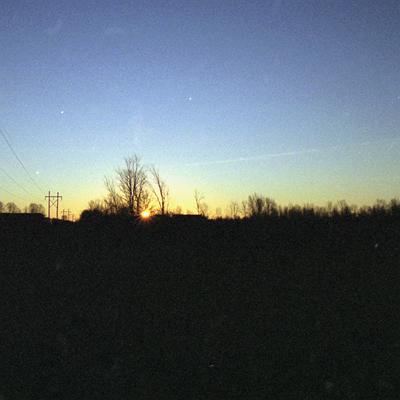
week 1: 22 December - the sun rises on a new year.
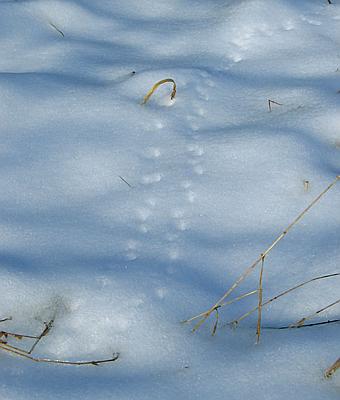
2: vole tracks are found when the snow is too shallow for tunnels. Small rodents are almost non-existent on the meadow - these were the only tracks I found the whole winter.
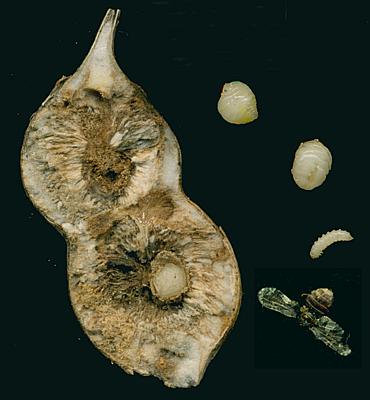
3: hidden life in the meadow - pupae and larva in a goldenrod gall, and the wasp that hatched indoors a month later.
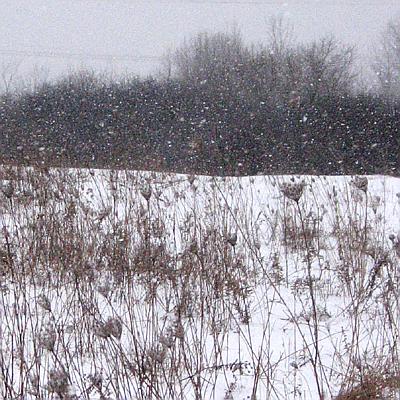
4: snow falling.
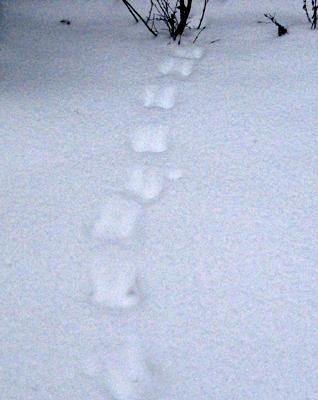
5: squirrel tracks in fresh snow.
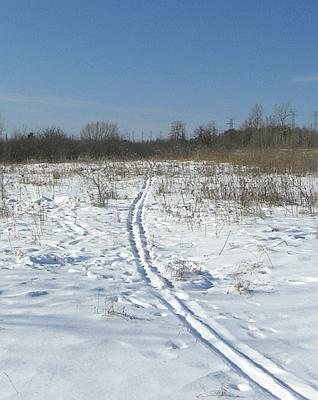
6: the lack of snow this year doesn't stop determined skiers.
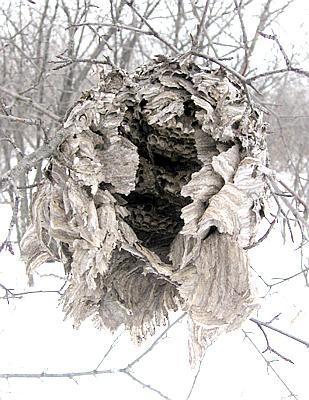
7: 20 below is a safe time to investigate wasp nests.
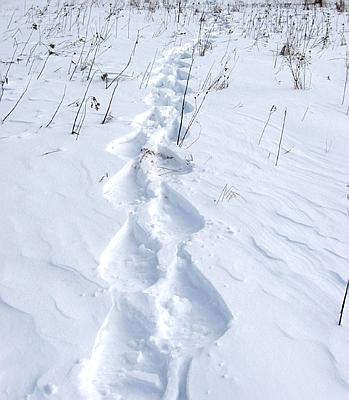
8: at last the snow is deep enough for snowshoes to be useful.
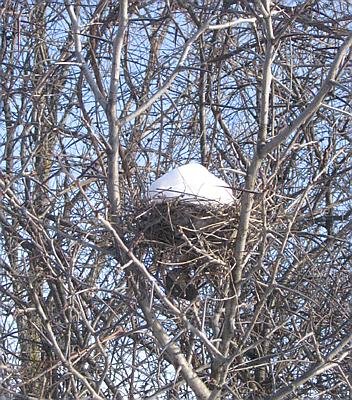
9: bird nests have top hats of snow.
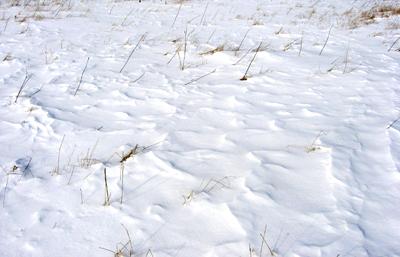
10: snow dunes form in windy areas.
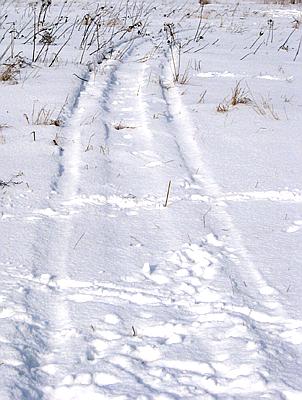
11: the NCC ban on motorised vehicles doesn't stop snowmobiles from private entrances.
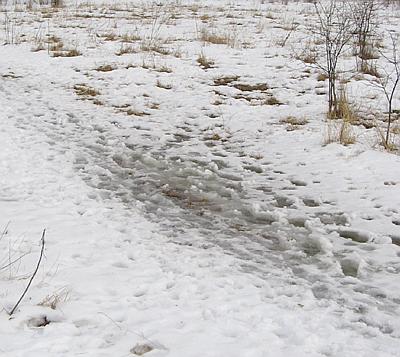
12: an early warm spell produces moisture-compacted snow and wet spots in depressions.
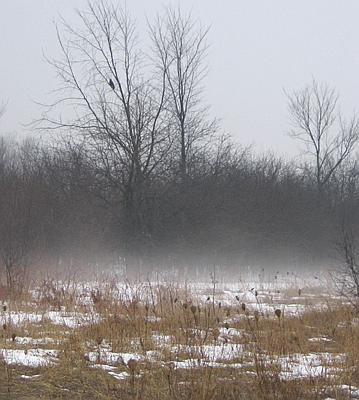
13: ground fog results when warm air meets cold earth where wind has blown away insulating snow.
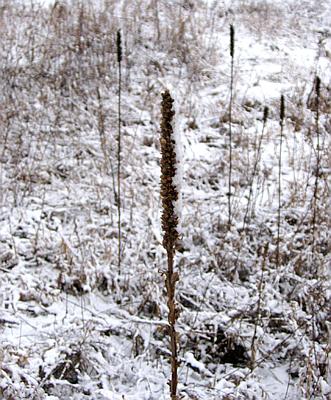
14: snow collects on mullein stalks on the east side, our prevailing wind direction during snow storms.
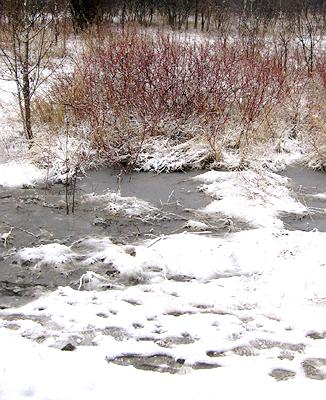
15: spring thaw resumes.
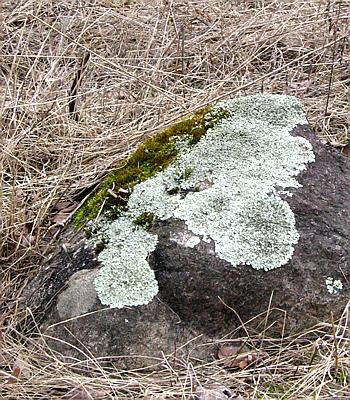
16: the snow is almost gone from sunny areas, but -6C nights ensure that only lichen and mosses can use the sun.

17: an Isabella caterpillar is looking for a place to pupate
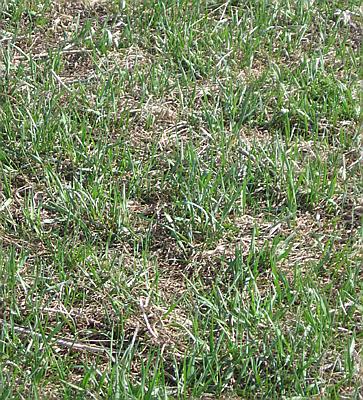
18: smooth brome is the first grass to start growth.
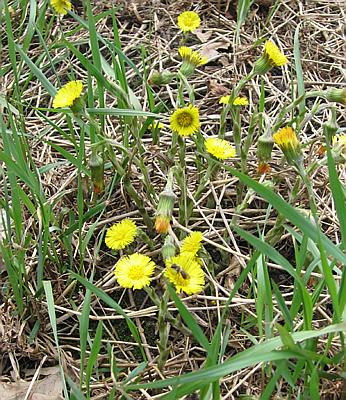
19: the first flowers of spring: Tussilago forfora near a stream attract early pollen lovers.
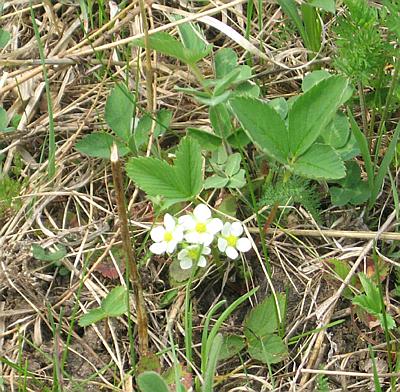
20: wild strawberries are in bloom.
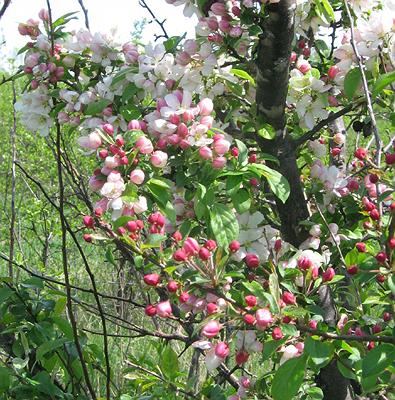
21: blooming shrubs abound with the promise of fall fruit - these are wild apples.
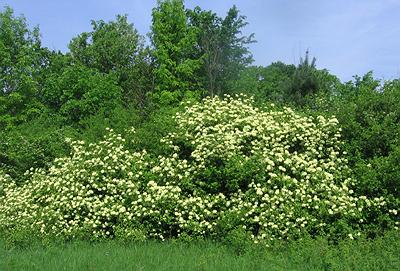
22: nannyberry provides delicious late summer berries.
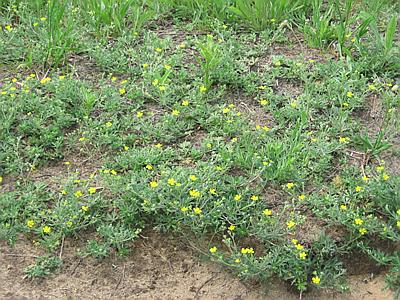
23: silvery cinqfoil brightens paths in dry sunny areas.
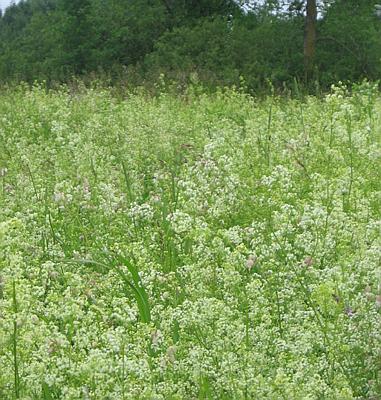
24: wild madder turns many areas gleaming white, wild caraway others.
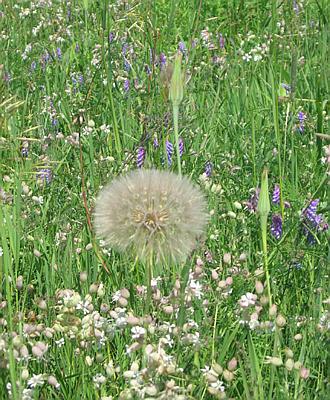
25: the spectacular seed heads of goatsbeard rise above speckles of blue vetch; the foreground is bladder campion, our longest-blooming meadow flower.
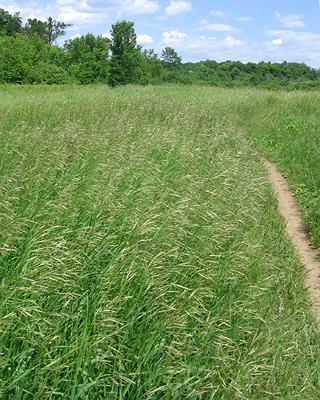
26: waving fields of smooth brome flowers appear. Brome and timothy were grown over much of the area when it was farmed.

27: monarch butterflies replace their lookalike viceroy once milkweed begins to bloom.
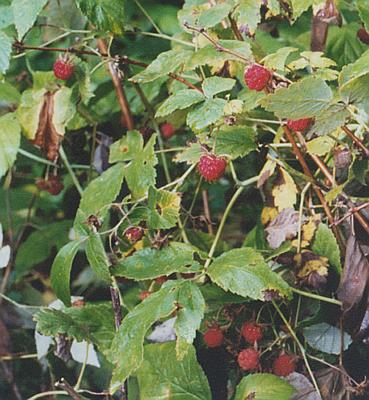
28: raspberry season begins.
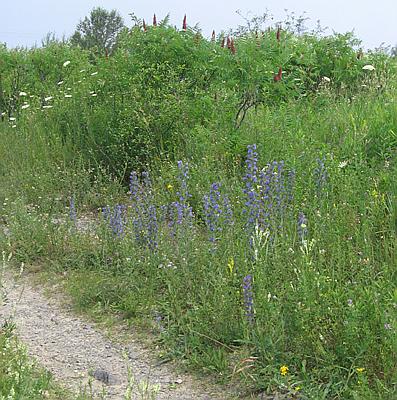
29: viper's bugloss, Queen Anne's lace and red sumac in a dry area.
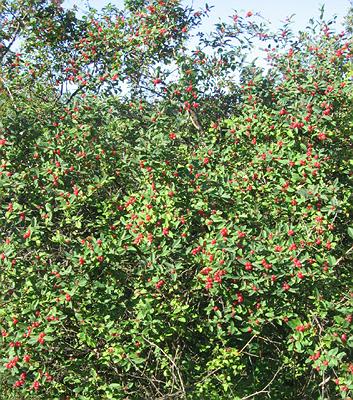
30: honeysuckle berries are eaten by birds such as cedar waxwing, who spread the seeds effectively; most are toxic to mammals like us that don't.
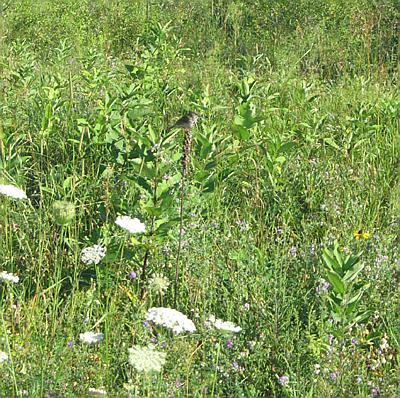
31: a song sparrow uses a mullein stalk still standing from last year as a territorial watch point.
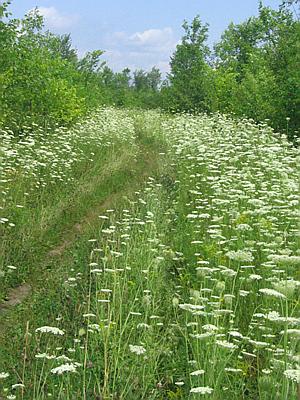
32: Queen Anne's lace lines the southern path.
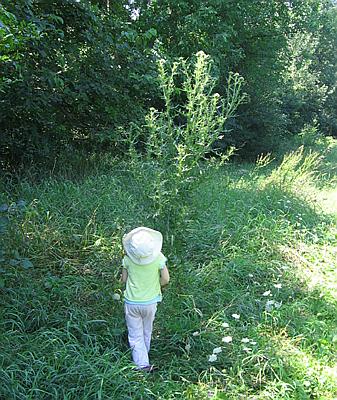
33: a magnificent bull thistle will provide seed for small finches even through the deepest snow.
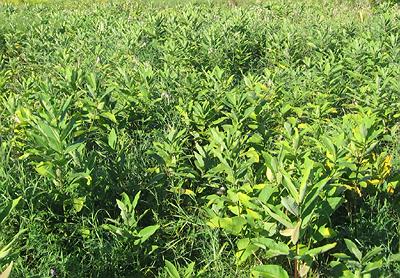
34: milkweed has gone to seed.
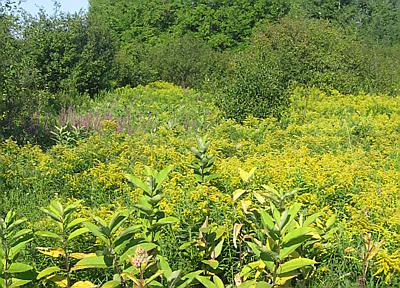
35: goldenrod and loosestrife begin to bloom.
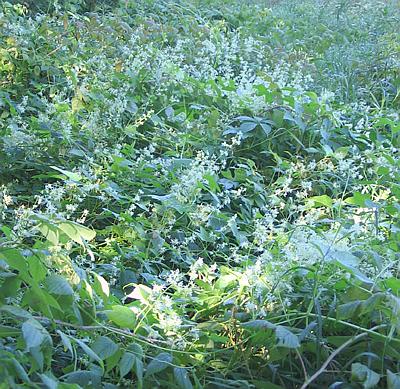
36: wild cucumber along the south path.
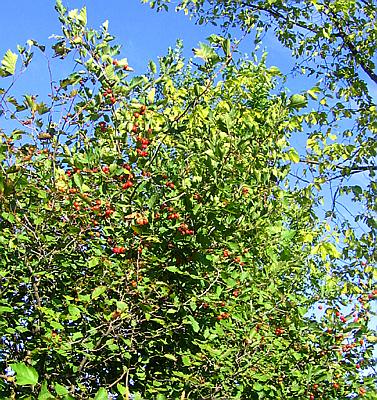
37: the promise of crabapple jelly.
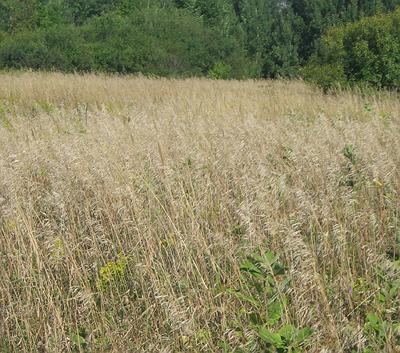
38: smooth brome puts on its fall colour.
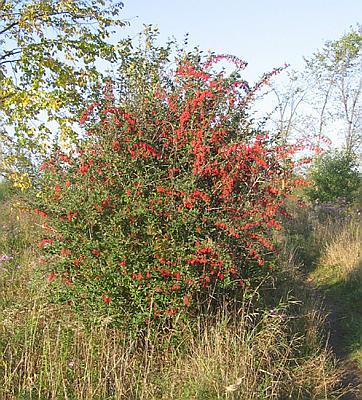
39: a solitary Japanese barberry flaunts its scarlet fruit.
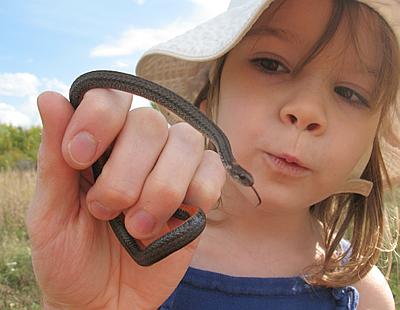
40: normally nocturnal, red-bellied snakes can be found sunning themselves on cool autumn days.
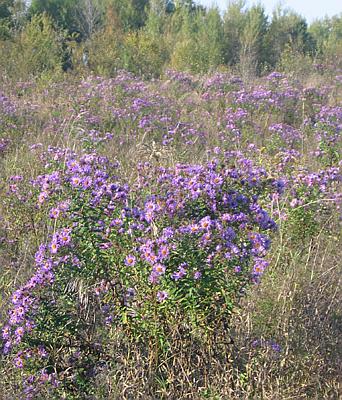
41: October brings fields of New England asters.
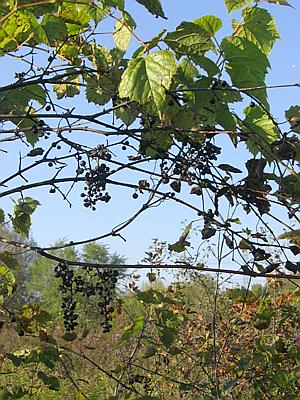
42: wild grapes are ready for harvest.
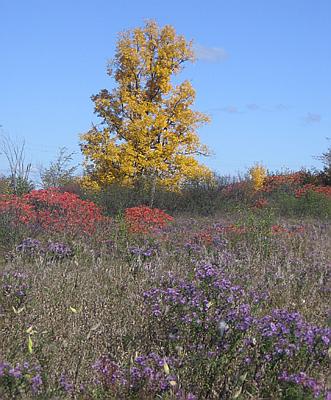
43: the surrounding trees are changing colour.
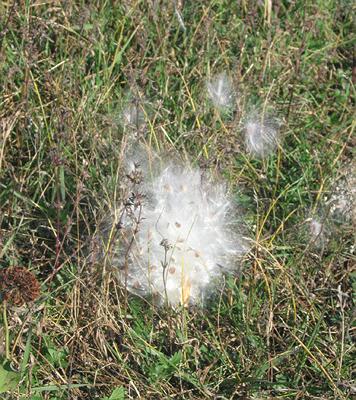
44: milkweed fluff briefly covers the meadow.
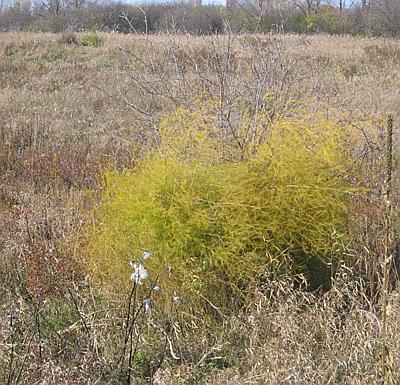
45: a clump of asparagus keeps its colour late.
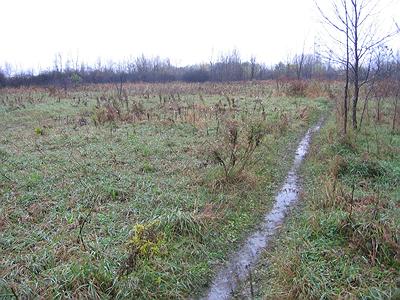
46: a grey fall day.
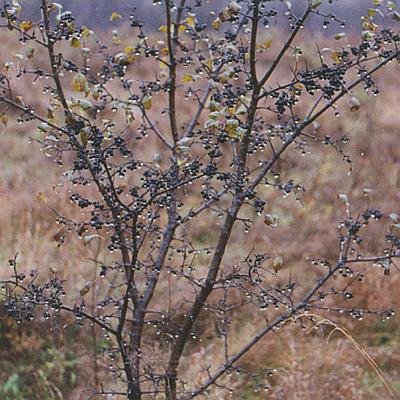
47: rain drops add sparkle to leafless twigs and berries.
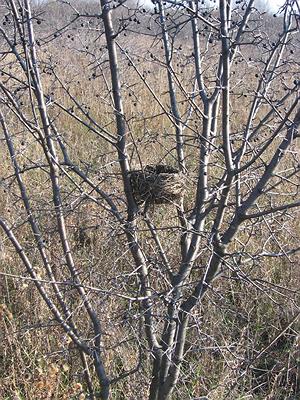
48: bird nests, so carefully hidden during nesting season, are easy to find now.
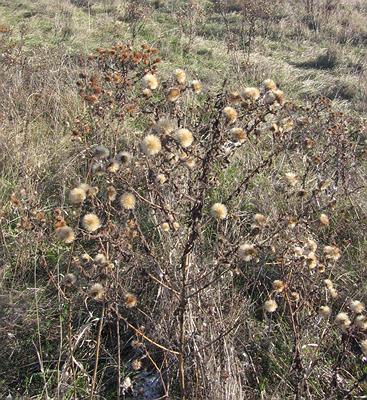
49: the meadow is covered with the soft brown seed heads of asters, which normally disperse here over snow but this year will land directly on damp earth.
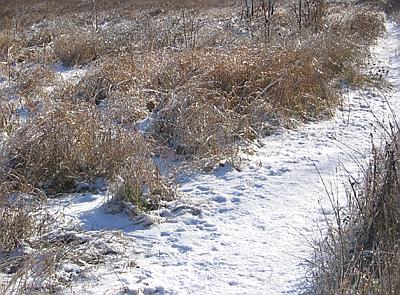
50: the first snowfall glitters in the sun.
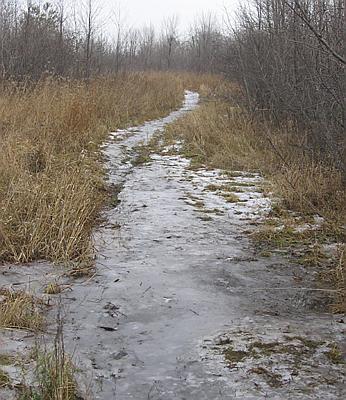
51: the freeze-thaw cycles of early winter make the paths treacherous, but lesser-walked areas are firm.
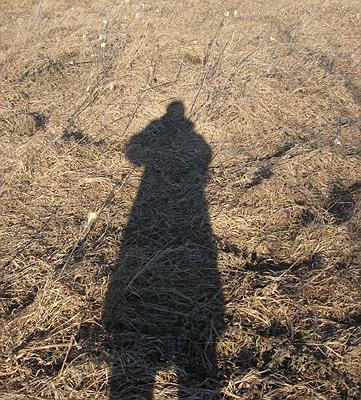
52: even noon shadows are long on the shortest day of the year.